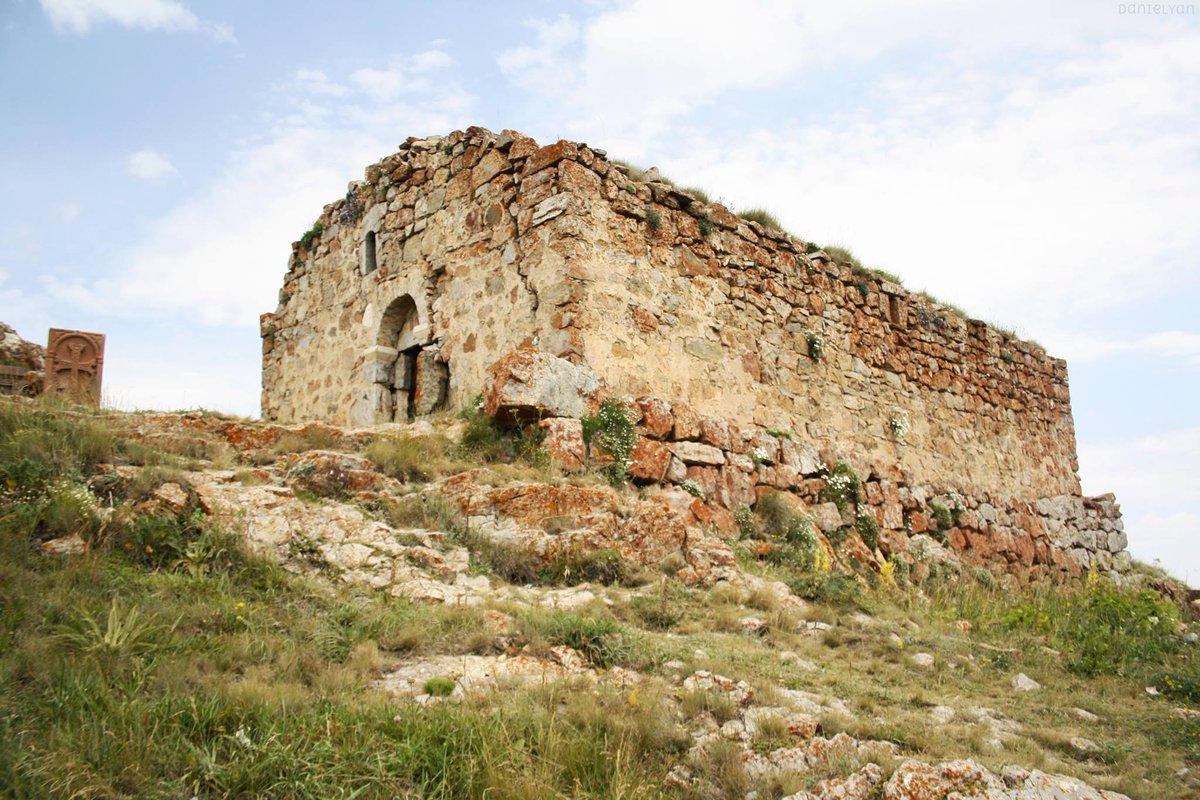Katarovank stands high atop Dizapayt, one of the highest mountain in Artsakh, but do not let the hike deter you—this monastery is worth the trek! The view from the remote peak, 2,478 meters high, is nothing short of breathtaking. The church is a modest construction, made of irregular rough and multicolored stones that evoke monastic humility. Even its simple rectangular form speaks to its deferential position in the mountainous terrain. The wonder of Katarovank is its location, where it invites visitors to be in awe of and humbled by the power and beauty of God’s landscape.
Legend Has It…
The present church at Katarovank dates to the seventeenth century, but locals will tell you the site is much older, perhaps dating back to the fourth century. A local legend holds that St. Grigoris, grandson of the founder of the Armenian church, St. Gregory the Illuminator, was martyred here in 335 AD, along with thousands of Christians in hiding. St. Grigoris is actually buried in a martyrium at Amaras, another monastery in Artsakh, which is also argued to be the site of his martyrdom. His precise ties, if any, to Katarovank come down to legend, but that does not detract from the spiritual power of the site. The mountains of Artsakh were plagued by war after the spread of Christianity in the fourth century, and it is highly possible there were Christians martyred atop Mount Dizapayt, whether or not St. Grigoris was among them. Nonetheless, the site has remained a popular site of devotion, and has been renovated several times. Beneath the present structure are the remains of a fourth or fifth-century temple, and the seventeenth-century church was recently renovated in the 2010s.
A Pilgrimage to the Peak
Katarovank is one of the most popular sites for pilgrimage in Artsakh, and has been for centuries. Unlike sites for pilgrimage in Western Europe, Katarovank does not house relics for pilgrims to venerate. The name, “Katarovank,” actually derives from the Armenian word for hilltop or peak, “katar.” The high altitude of the church is precisely its reason for existance, and the journey there is part of its spiritual power. The path to the church is difficult, filled with uneven terrain and steep climbs. The journey is physically taxing, recalling Christ’s arduous ascent to Calvary, carrying his cross. Once you reach the peak, you find the monastery is actually slightly below you, on an outcrop of rock. Its lower elevation allows pilgrims to marvel at the immense rugged landscape receding before them, before lowering themselves from the peak in an act of humility to approach the church below. Upon entering Katarovank, a simple interior welcomes you inside. The interior is unadorned, consisting of plastered-over uneven stones like those on the exterior. A small window, directly behind a white stone altar in the apse, illuminates the eastern end of the church. The area around the altar is filled with offerings from pilgrims, in the form of crosses, images of Christ, or finely woven carpets. There is also a small book in which pilgrims may write their prayers.
The church of Katarovank is secondary to its site. The mountain top on which the church is perched is its main appeal, and the object of pilgrims’ devotion. The mountains of historic Armenia are filled with spiritual meaning. Standing atop Dizapayt, you can imagine how Noah felt standing on another Armenian mountain, Mount Ararat, where his Ark landed during the Great Flood of the Old Testament. This is the land that greeted him, the land God promised him in exchange for his faith. Rather than a pilgrimage to a saint’s relics, or a specific site in Christian history, pilgrims to Katarovank journey to a mindset, one that reminds them of divine power, salvation, and a promised land.
